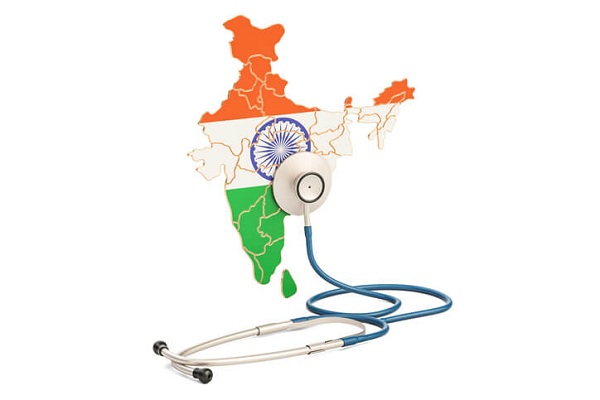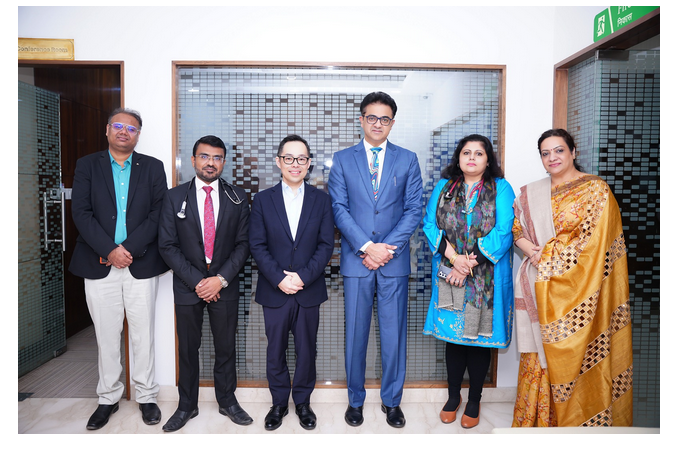The 16th meeting of Group of Ministers (GoM) was held in New Delhi through video conference in which containment measures of COVID-19 was reviewed. During the meeting, the GoM was briefed about the latest status, response and management of COVID-19 in the country.
GoM Chairman Dr. Harsh Vardhan said that India is in a much better place than the rest of the world but there was no scope for complacency. The GoM was also apprised about the growing medical infrastructure in the country.
It was informed that as of 9th June, the COVID related health infrastructure was strengthened with the availability of 958 dedicated COVID Hospitals with over 1.67 lakh isolation beds, over 21 thousand ICU beds and over 73 thousand oxygen-supported beds.He said, besides, 2,313 dedicated COVID Health Centres and 7,525 COVID Care Centres are now available to combat COVID-19 in the country.The ventilators available for COVID beds are 21 thousand 494. The Centre has further placed an order of 60 thousand 848 ventilators.
It was also informed that ICMR’s testing capacity has increased through 553 government and 231 private laboratories and more than 49 lakh cumulative tests have been conducted in the country so far.
In the last 24 hours, 1,41,682 samples were tested. It was also apprised that a total of 1, 29,214 people were cured out of which 4,785 patients were cured in the last 24 hours.
This takes the total recovery rate from the infection to 48.47 percent. The total number of active cases now stood at 1,29,917.
During the meeting, a brief snapshot was presented to the GoM highlighting the comparative position of India with respect to other countries in a similar stage of easing lockdown, underscoring the benefits that had accrued from the lockdown.
The GoM was also briefed on the progress made in the spheres of the tasks assigned to the 11 Empowered Groups.
Dr. Harsh Vardhan also said that as the country has entered into the Unlock 1.0 phase where restrictions have been eased, people are required to be more disciplined and they should follow all norms related to physical distancing, hand hygiene and protocols of respiratory etiquette.
He strongly reiterated that there is no space for complacency. He also reminded everyone to download the Aarogya Setu app which will help in the self-risk assessment and in protection against COVID-19. More than 12.55 crore people in the country have downloaded the app so far.
Chairman of Empowered Group-5 Parameswaran Iyer presented the critical strategies adopted to ease the burden of lockdown while enabling the supply of critical items for the country to fight the pandemic.
Dr. Raman Gangakhedkar from ICMR presented details on the status of testing labs, augmented capacities for testing across the country and also enlightened the GoM on various issues related to HCQ, Remdesivir and sero-surveillance studies.
External Affairs Minister Dr. S. Jaishankar, Civil Aviation Minister Hardeep Singh Puri and Minister of State for Home Nityanand Rai were among those who attended the meeting.
Meanwhile, the Union Government has deployed high level multi-disciplinary central teams in the most affected 15 States and Union Territories that are witnessing high numbers of COVID -19 infections. These teams shall assist the States and Union Territories by providing technical support for the containment of the Covid-19 pandemic in the country. The Central teams have been deployed in Maharashtra, Telangana, Tamil Nadu, Rajasthan, Assam, Haryana, Gujarat, Karnataka, Uttarakhand, Madhya Pradesh, West Bengal, Delhi, Bihar, Uttar Pradesh and Odisha.
The three-member team consists of two public health experts, epidemiologists, clinicians and a senior Joint Secretary level nodal officer. These teams are providing support to the State Health Department in the implementation of containment measures and efficient treatment, clinical management of cases within the districts and cities.
The central teams are providing assistance to resolve challenges like testing bottlenecks, low tests per million population, high confirmation rates, risk of capacity shortfall over the next two months, potential bed shortage, growing case fatality rate, high doubling rate and sudden spike inactive cases. Many districts and municipalities have already formalized a dedicated core team at the district level to coordinate with the Central team.

 GOI takes stock of the situation presses additional measures to contain the pandemic
GOI takes stock of the situation presses additional measures to contain the pandemic










.jpeg)







.jpeg)

.jpg)










